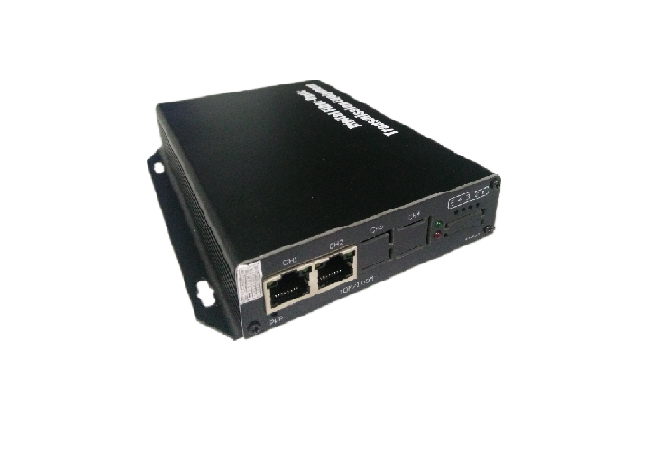Optical transceiver is a commonly used signal transceiver at present. Many people often confuse it with media converter. However, there is still a big difference. We must first understand the definition of optical transceiver and media converter, and then distinguish the difference between them.
Optical transceiver: it is a device that converts multiple E1 (a data transmission standard of trunk line, with a general rate of 2.048mbps, which is adopted by China and Europe) signals into optical signals and transmits them. The price of the optical transceiver varies according to the number of E1 ports. The optical transceiver is divided into a transmitter and a receiver. The transmitter converts an electrical signal into an optical signal; The receiver converts the transmitted optical signal into an electrical signal and transmits it to the next level equipment. The optical transceiver can transmit video signals, 485 control signals, network signals, alarm signals, audio signals, switching values, etc.
The optical transceiver in monitoring is generally: one end of the optical transmitter is connected to the camera, the other end is connected to the optical fiber, one end of the optical receiver is connected to the optical fiber, and the other end is connected to the display equipment.
The digital optical transceiver is mainly used to digitize the image, voice and data signals to be transmitted, and then multiplex these digital signals to convert them into optical signals; At the receiving end, the optical signal is restored to an electrical signal, that is, the original image, voice and data signals.

There are two types of conventional optical transceiver:
1. PDH optical transceiver is used to transmit data signals.
2. Video optical transceiver is used to transmit video monitoring signals. This optical transceiver needs a receiver and a transmitter. The main function of the receiver, that is, the video receiver, is to convert optical signals into electrical signals (D / a). The main function of the transmitter, that is, the video transmitter, is to convert electrical signals into optical signals (A / D).
Media converter is an Ethernet transmission medium conversion unit that exchanges short-distance twisted pair electrical signals and long-distance optical signals. It is called radio and television converter in some places. This product is generally used in the actual network environment where the Ethernet cable cannot be covered and the optical fiber must be used to extend the transmission distance. It is usually located in the access layer application of the broadband metropolitan area network and is generally used to help connect the last kilometer of the optical fiber line to the metropolitan area network and the outer layer network.
Media converters generally have the following basic characteristics. 1. Provide ultra-low delay data transmission. 2. Completely transparent to the network protocol. 3. Special ASIC chips are used to realize data line speed forwarding. Programmable ASIC integrates multiple functions into one chip, which has the advantages of simple design, high reliability, low power consumption, etc. It can make the equipment obtain higher performance and lower cost. 4. The equipment adopts 1 + 1 power supply design, supports ultra wide power supply voltage, and realizes power protection and automatic switching. 5. Support ultra wide working temperature range. 6. Support complete transmission distance (0 ~ 120km)
In essence, the media converter only completes the data conversion between different media, and can realize the connection between two Industrial Switches or computers within 0-120km, but it actually has more expansion.
1. Realize the interconnection between industrial switches; 2. Realize the interconnection between computers; 3. Realize the interconnection between industrial switches and computers; 4. Single multimode conversion: when single multimode connection is required between networks, a single multimode converter can be used for conversion; 5. Wavelength multiplexer transmission: when long-distance optical cable resources are insufficient, in order to improve the utilization rate of optical cable and reduce the cost, the transceiver and wavelength multiplexer can be used together to transmit two channels of information on a pair of optical fibers.
The difference between optical transceiver and media converter: the optical transceiver and media converter are the same in that photoelectric conversion is required; The difference between them is that the media converter is mainly transmitted to the network, and only performs photoelectric conversion, does not change the coding, and does not perform other data processing. The media converter is for Ethernet, runs 802.3 protocol, and is only used for point-to-point connection. In addition to photoelectric conversion, the optical transceiver also multiplexes and demultiplexes data signals. One core transmits video, 485 / 422 / audio / light on / network, etc. usually, the optical transceiver outputs multiple pairs of E1 lines.
Media converters are used in networking such as banking and education. The optical transceiver is mainly used for telecommunication operators to provide multi-point-to-point data circuits; Video optical transceiver is mainly used in security monitoring, remote education, video conference and other fields requiring high timeliness of video transmission. At the same time, it can transmit control, switching, voice, Ethernet and other signals to meet the needs of multi service applications. Therefore, we sometimes call it integrated optical transceiver.
Contact: sales
Phone: 18688787693
E-mail: sales@hsindustrialswitch.com
Add: Room 608, Building B,GaoXinQi TEC Park,Baoan District, ShenZhen,China